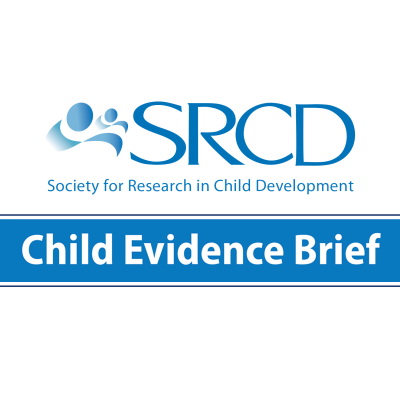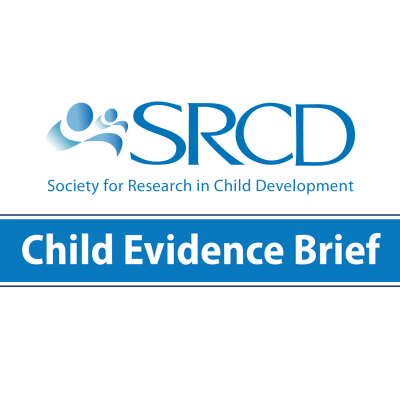Raising Healthy Children: Work Roles & Children’s Development
Child Development Research in Brief, 2011
A section in the January/February 2011 special issue of Child Development on Raising Healthy Children features articles that focus on work roles and how they can affect children’s development. The evidence indicates that children respond to supportive caregiving both at home and in early care and education or school-age care, and show the most positive development when they receive supportive care in both settings. Employed mothers can bring important resources into the family and can serve as positive role models for children’s own eventual employment as adults. At the same time, employed mothers may need help in supporting children’s positive eating and physical activity. As they grow older, teenagers also seek employment roles, and the hours that they devote to being employed matter.
What Does The Research Tell Us?
Raising healthy children is more likely when both home and child care environments are supportive. Positive home and child care environments are both important to children’s development. A body of research shows that high quality home environments play a clear protective role in children’s healthy socialemotional behavior.6 For example, a study involving three generations reported on in the special issue found that emotional investments in parenting (including enjoyment of parenting, monitoring, consistent discipline and observed warmth) predicted positive personality characteristics in adolescent children in a first set of parent-child relationships. When the adolescents became parents, their emotional investment in parenting, in turn, predicted the adaptive functioning of their children.5 A study in the special issue of Child Development that considered the joint influences of the quality of the home and child care environments using data from the NICHD Study of Early Care and Youth Development, found that children who experience the “double jeopardy” of poor quality home and child care environments showed the highest levels of motherreported problem behavior and the lowest levels of prosocial behavior. However, high quality child care environments served a compensatory role for children from poor quality home environments. Mothers of children with this combination of experiences did not rate their children as showing poorer social-emotional development.6
Employed mothers can bring important resources to the family and model employment roles. An employment-based antipoverty program, New Hope, implemented and evaluated in Wisconsin as an alternative to public welfare and designed to be replicable as public policy, provided income supplements that helped raise incomes above the poverty level when parents worked at least 30 hours per week, and also provided such benefits as child care assistance and health insurance. Resources provided to families for their children led to increased participation in before/ after-school programs and other structured activities. A rigorous evaluation of the children and families participating in New Hope has followed the children at different points in time. The study reported on in the special issue reports on the development of the children 8 years after the three-year program enrollment (and five years after their parents concluded participation), when the children were 9-19 years old. The study found that youth in New Hope families were more involved in career and employment preparation, were less cynical about work, and worked for longer periods during the school year (though not for more hours per week). The pattern of positive effects were particularly pronounced for African American youth.1 These findings suggest long-term, positive impact from providing families with a combination of income supports, supplemental work support resources and access to child care and structured activities for children. Parents may serve as role models in the workforce when work helps to achieve economic self-sufficiency. Alternatively (or in addition), children’s participation in structured activities outside of home and school may play a positive role.
Yet at the same time, maternal employment appears to be related to weight gain in children. A study in the special issue using data from the NICHD Study of Early Child Care and Youth Development reports an association between the duration of time mothers are employed and their school-age children’s body mass index (BMI). Mothers’ entry into employment was more strongly associated with the likelihood of being overweight for 5th and 6th graders than for younger children. No significant association was found between mothers’ nonstandard work hours and children’s BMI. Counter to expectations, associations were not explained by the amount of time children watched TV, their physical activity, maternal depression, or time unsupervised.3 The researchers note that older children with employed mothers may make more independent, and perhaps poorer, choices relating to meals and snacks. There may be a need to help working families support their children’s healthy eating and physical activity.
Employment roles for teens also affect development. In a study reported on in the special issue, high school students in grades 10 or 11 who became employed for more than 20 hours a week showed lower school engagement and higher levels of problem behaviors, especially when they transitioned from no earlier employment to intensive hours of employment during the school year, compared to youth who were remained nonemployed.2 Moderate hours of employment (20 or fewer hours per week) did not seem to affect teens negatively. While this pattern has been identified in previous research, more rigorous research methods help to confirm that this pattern is not a reflection of the characteristics of the youth who become employed more than 20 hours a week. Instead, the outcomes appear to reflect the influences of more intensive employment.
Implications for Policy and Practice
Policymakers and practitioners can support healthy development in families with employed parents and teenagers by expanding the implementation of evidence-based programs that:
- Support positive interactions of children both with their parents and with caregivers in early care and education.
- Use income supplements and work supports to bring family income above the poverty level and that expose children to positive after-school programs and activities when parents work full time.
- Monitor and limit the number of hours adolescents work during the school year to 20 or fewer hours per week.
- Consider ways that healthy eating and physical activity interventions for children can take into account the specific needs of families in which the mother is employed.
References
All of the papers cited in this brief are published in Child Development (2011), Volume 82, Issue 1 and include:
1 McLoyd, V. C., Kaplan, R., Purtell, K. M., & Huston, A. C. Assessing the effects of a workbased anti-poverty program for parents on youth’s future orientation and employment experiences, 113-132.
2 Monahan, K. C., Lee, J. M., & Steinberg, L. Revisiting the impact of part-time work on adolescent adjustment: Distinguishing between selection and socialization using propensity score matching, 96-112.
3 Morrissey, T. W., Dunifon, R. E., & Kalil, A. Maternal employment, work schedules, and children’s body mass index, 66-81.
5 Schofield, T. J., Martin, M. J., Conger, K. J., Neppl, T. M., Donnellan, M. B., & Conger, R. D. Intergenerational transmission of adaptive functioning: A test of the interactionist model of SES and human development, 33-47.
6 Watamura, S. E., Phillips, D. A., Morrissey, T. W., McCartney, K., & Bub, K. Double Jeopardy: Poorer social-emotional outcomes for children in the NICHD SECCYD experiencing home and child-care environments that confer risk, 48-65.
This special issue is introduced with an overview and synthesis by the co-editors, Nancy G. Guerra, Sandra Graham and Patrick H. Tolan.


